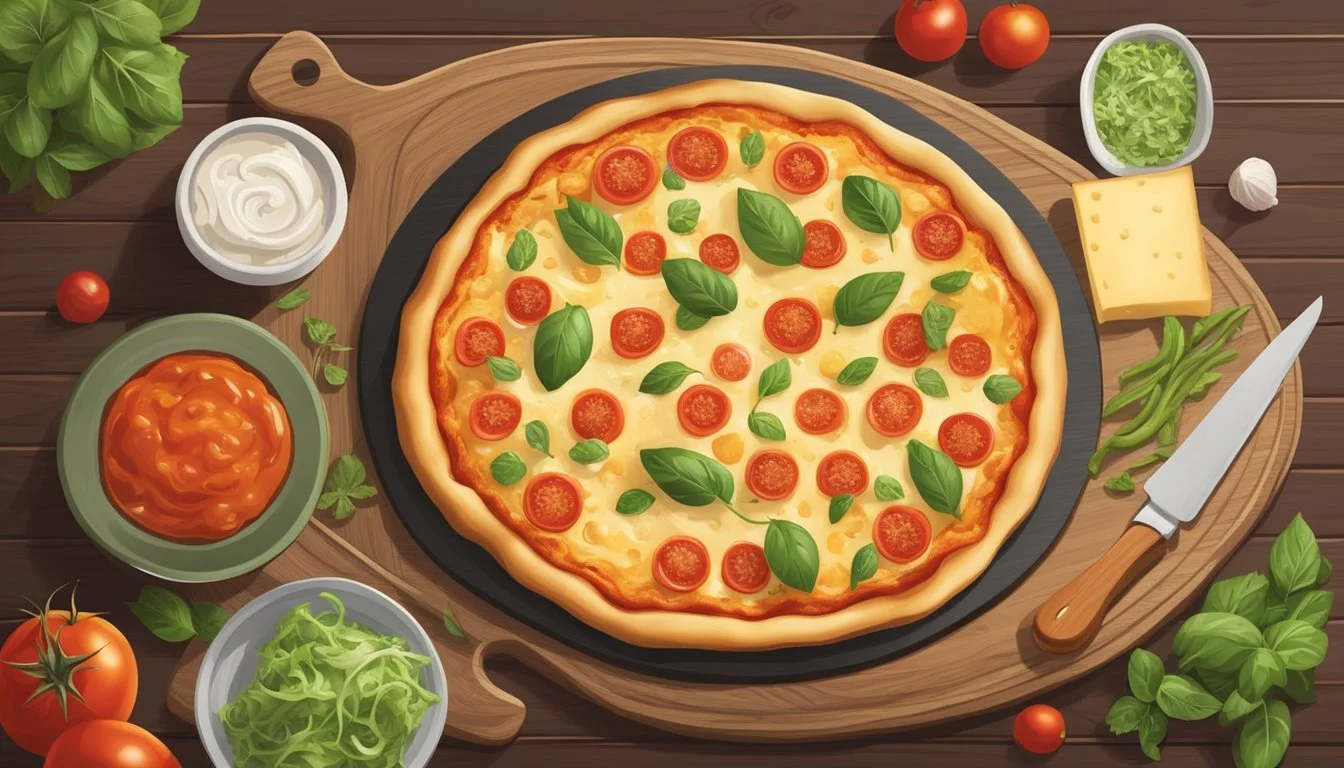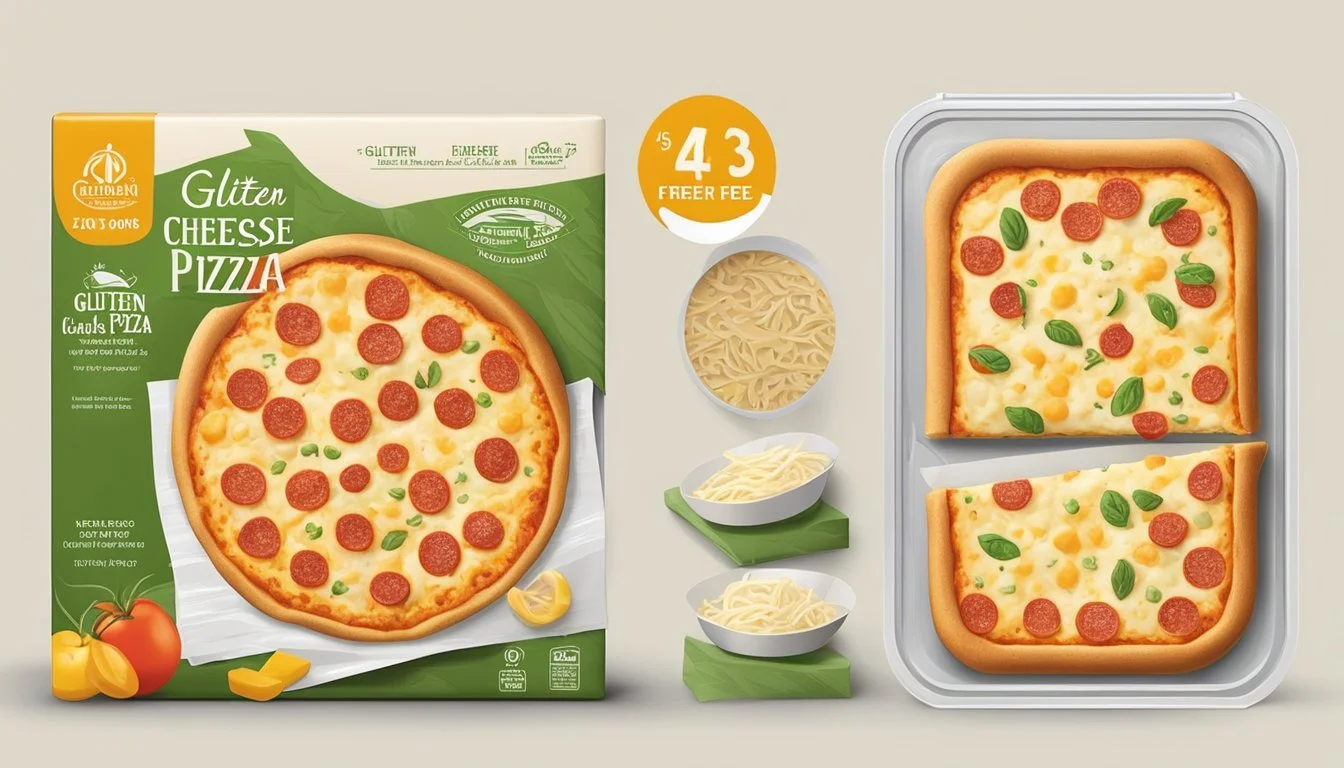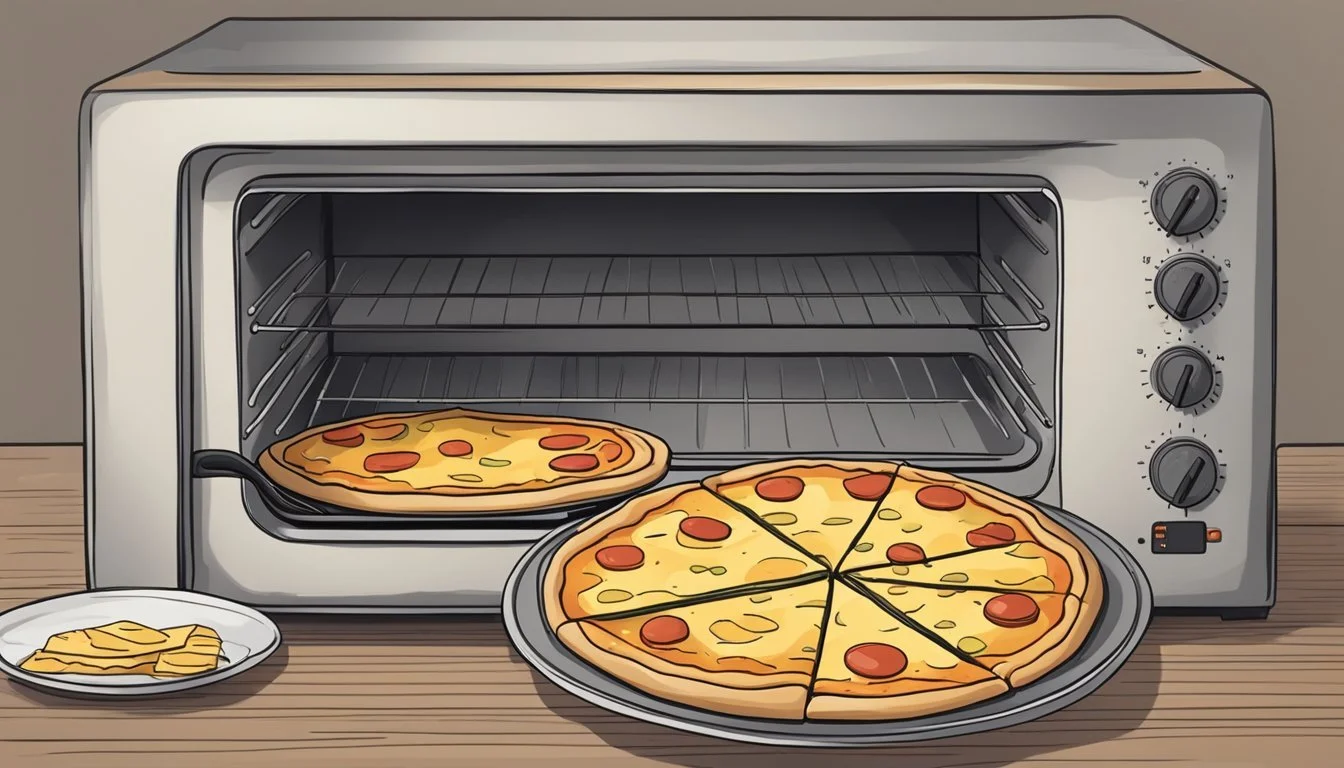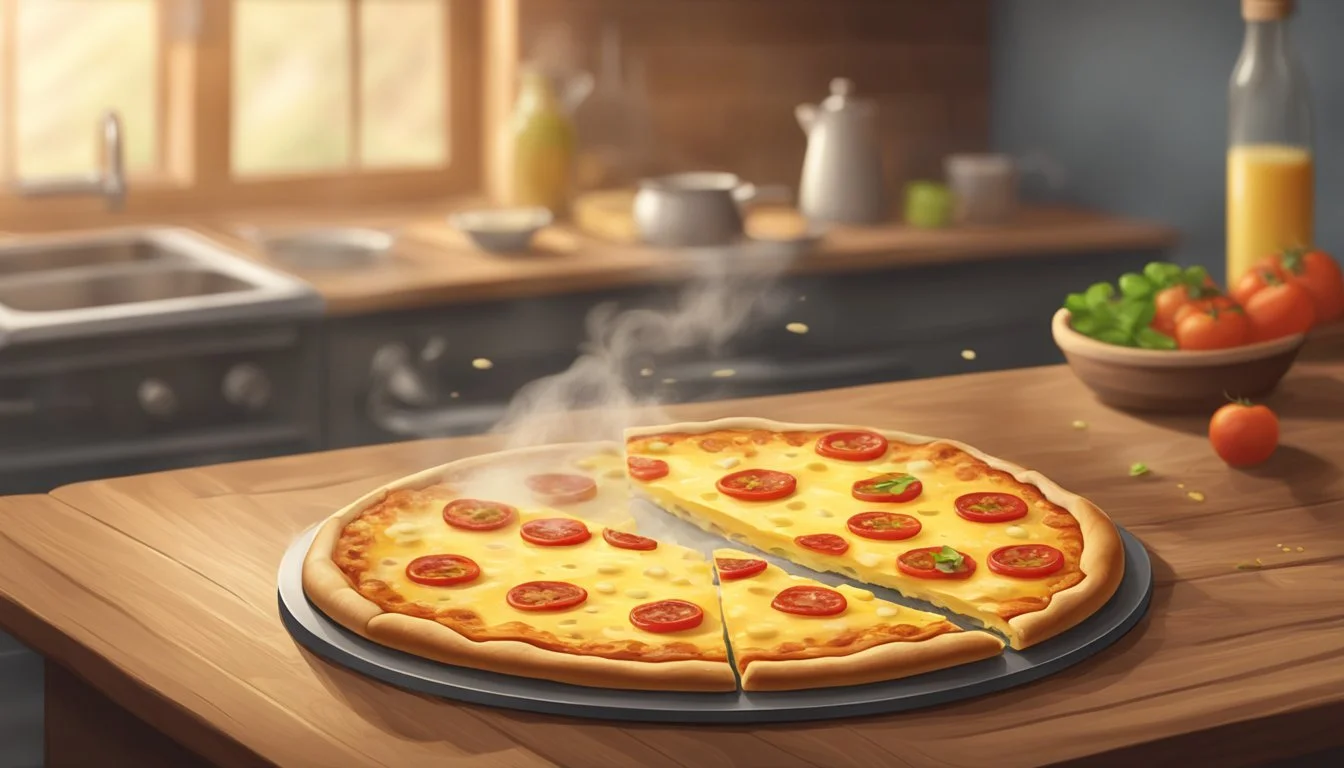How Long Does Gluten-Free Cheese Pizza Last?
Storage Tips and Shelf Life
Curious about how long gluten-free cheese pizza lasts? You're in the right place. Whether it's a homemade crust topped with your favorite cheeses or a store-bought option like FRESCHETTA® or DIGIORNO®, gluten-free cheese pizza typically lasts for up to 3-4 days when stored properly in the refrigerator.
The crust and cheese combination plays a crucial role in its shelf life. A crispier crust, achieved by baking directly on the oven rack, might hold up better over a few days compared to a softer crust. Proper storage in an airtight container is essential to maintain freshness and prevent contamination.
If you're planning to store it longer, freezing is an option. Frozen gluten-free cheese pizza can last up to 1-2 months. Make sure to wrap it tightly in plastic wrap and aluminum foil. Remember, reheating thoroughly to an internal temperature of 165°F ensures both safety and flavor.
Understanding Gluten-Free Pizza
Gluten-Free Pizza is crafted to cater to those with gluten sensitivities, featuring specific ingredients and preparation methods that ensure a safe and enjoyable meal. Its unique components and techniques shape both the flavor and texture.
Ingredients and Alternatives
Gluten-Free Pizza employs gluten-free flour as its base, which can be a blend of rice flour, potato starch, and tapioca starch. To mimic the elasticity gluten provides, xanthan gum is often included. This ingredient helps bind the dough together, ensuring it does not crumble.
Traditional ingredients like yeast, water, salt, and sugar are still used but must be verified as gluten-free. Additionally, olive oil is a common inclusion that adds richness to the dough. Dairy-free cheese options can be used as alternatives for those with additional dietary restrictions.
Gluten-Free Dough Preparation
The preparation of Gluten-Free Pizza dough varies from traditional methods to accommodate the absence of gluten. Initially, the dry ingredients, including gluten-free flour, salt, and xanthan gum, are mixed together. Separately, the yeast is proofed with warm water and sugar.
Once combined, the mixture is kneaded into a dough, which is often stickier than regular dough. It is important to cover it and allow it to rise in a warm place. Finally, the dough is rolled out on parchment paper and pre-baked before adding toppings and baking to completion.
Baking Gluten-Free Pizza
Mastering gluten-free pizza involves both choosing the right ingredients and utilizing specific baking techniques. It is essential to pay attention to oven temperatures and equipment to achieve the best results.
Optimal Baking Techniques
When baking gluten-free pizza, precision is key. Preheat the oven to at least 450°F (232°C) to ensure an even bake. Many recipes combine baking powder with gluten-free flour to provide a rise without yeast.
Use parchment paper to prevent sticking and to help transfer the dough. Par bake the crust for 10 minutes before adding toppings to avoid a soggy bottom. This technique creates a firm base that holds up well.
Rotate the pizza halfway through cooking to promote even browning. Check for doneness by looking for a golden-brown crust and bubbling cheese. Adjust the cooking time based on the thickness of the crust.
Utilizing a Pizza Stone or Skillet
A pizza stone or skillet can significantly enhance the crust’s texture. Preheat the stone or skillet in the oven for a minimum of 30 minutes before baking. This helps to create a superheated surface.
Place the pizza directly onto the stone or skillet for an authentic, crispy bottom crust. The thermal mass of these tools mimics the conditions of a traditional pizza oven.
For the best results, avoid overloading the pizza with toppings. Excess weight can hinder proper cooking and lead to a doughy crust. If using a skillet, consider a cast iron version, which distributes heat evenly and maintains high temperatures well.
Customizing Your Pizza
When customizing your gluten-free cheese pizza, you should consider both the variety of toppings and their nutritional values. Customization allows for creativity and ensures that the pizza meets dietary preferences and nutritional needs.
Toppings and Flavors
Choosing the right toppings can transform a basic gluten-free cheese pizza into a culinary delight. Common toppers include pepperoni, mushrooms, bell peppers, and onions.
Fresh basil, garlic, and oregano add aromatic flavors, enhancing the taste experience. For those who prefer a dairy-free option, various vegan cheese alternatives are available, providing similar texture and flavor to traditional cheese.
Olive oil can be drizzled on the crust or mixed into the pizza sauce for added richness. Experiment with combinations like mozzarella and spinach or fontina and arugula for a gourmet touch.
Nutritional Considerations
Customizing a pizza also involves paying attention to nutritional aspects. Adding lots of vegetables like bell peppers, spinach, and onions can increase the fiber and vitamin content.
It's essential to balance indulgent ingredients like pepperoni with healthier choices. Opt for lean proteins such as grilled chicken or tofu for added nutritional benefits.
For those adhering to dairy-free diets, vegan cheese made from nuts or soy provides a good alternative. Switching to a whole grain or cauliflower crust can also make the pizza more nutritious. Pay attention to the sodium content in toppings like pepperoni and sausage to keep the meal healthier.
Storing Gluten-Free Cheese Pizza
Proper storage is critical to maintain the freshness and taste of gluten-free cheese pizza. This section will provide detailed guidelines on refrigeration and shelf life, ensuring maximum enjoyment of leftovers.
Refrigeration Guidelines
To keep gluten-free cheese pizza fresh, store it in the refrigerator within two hours of baking or purchasing. Place the pizza slices in an airtight container or wrap them tightly with plastic wrap or aluminum foil to prevent moisture loss and exposure to air.
Arrange slices in a single layer, adding parchment paper between layers if stacking is necessary. Consume refrigerated pizza within 3-5 days for optimal taste and texture.
Tip: When reheating, use a pan, oven, or microwave with a cup of water to maintain the crust's texture.
Understanding Shelf Life
The shelf life of gluten-free cheese pizza depends on proper storage methods and packaging. When refrigerated immediately and kept in airtight containers, gluten-free pizza retains quality for up to five days. Keep an eye on texture and smell as these are indicators of spoilage; a dried-out crust or off-smelling cheese suggests it's time to discard.
For longer storage, freezing is viable. Wrap slices individually in plastic wrap and aluminum foil or place them in freezer-safe bags. Frozen pizza can last up to three months, maintaining its quality when thawed and reheated properly.
Reheating and Serving
Reheating gluten-free cheese pizza requires careful attention to maintain taste, texture, and crispiness. This section covers the best methods for reheating pizza and tips for preserving its quality.
Best Reheating Methods
Oven Method: Preheat your oven to 375°F (190°C). Place pizza slices on a piece of foil or a baking sheet. Heat for 10-15 minutes or until the cheese melts and the crust is crispy. This method evenly warms the pizza and preserves its texture.
Skillet Method: Use a nonstick, cast-iron, or stainless steel skillet. Heat the skillet over medium heat, add pizza slices, and cook for 2-3 minutes until the crust is golden and crispy. For melty cheese, cover with a lid for the last minute, adding a few drops of water to create steam.
Microwave Method: Place the pizza on a microwave-safe plate. To prevent sogginess, microwave for 1-1.5 minutes with a cup of water inside the microwave. The water absorbs excess microwaves, helping maintain the crust's texture. This method is quick, though the texture may vary.
Maintaining Pizza Quality
Storage: After cooking, let the pizza cool to room temperature before storing it in an airtight container in the refrigerator. This prevents the cheese from hardening and helps retain moisture.
Proper Wrapping: Wrap the slices in parchment paper or foil to prevent dehydration. Avoid plastic wrap as it traps moisture, making the crust soggy.
Reheating Tips: When reheating, consider adding a little cheese to rejuvenate the flavor. For an extra crispy crust, preheat a baking stone in the oven before placing the pizza on it.
By following these tips, you ensure your gluten-free cheese pizza remains delicious and enjoyable.
Health and Dietary Considerations
When considering gluten-free cheese pizza, it's essential to understand its impact on specific health conditions and any certifications that ensure it meets dietary requirements.
Managing Celiac Disease and Allergies
For individuals with celiac disease, consuming gluten-free cheese pizza is crucial. Celiac disease triggers an immune response to gluten, damaging the small intestine. A strict gluten-free diet is the only treatment. Gluten-free cheese pizza allows such individuals to enjoy pizza without harmful effects.
Wheat allergies present differently than celiac disease, causing typical allergic reactions like hives, swelling, or breathing difficulties. A gluten-free pizza ensures those with wheat allergies avoid these reactions.
Restaurant preparation methods matter. Cross-contamination can occur if gluten-free pizzas are made in the same space as traditional ones. Dedicated gluten-free preparation areas or strict procedures should be followed.
Gluten-Free Certification and Allergen Info
For gluten-free pizza to be safe, it should ideally be certified gluten-free by organizations like the National Celiac Association. Certification ensures the product contains less than 20 parts per million (ppm) of gluten, making it safe for those with celiac disease.
Allergen information is vital. Consumers need to know not only that the product is gluten-free but also the presence of other allergens, such as dairy in cheese. Accurate and transparent labeling helps people with multiple dietary restrictions.
Producers should provide clear allergen statements and sourcing information. This transparency helps consumers make safe and informed dietary choices. Reading labels and verifying certifications before consumption ensures safety and adherence to dietary needs.
Health and Dietary Considerations
When considering gluten-free cheese pizza, it's essential to understand its impact on specific health conditions and any certifications that ensure it meets dietary requirements.
Managing Celiac Disease and Allergies
For individuals with celiac disease, consuming gluten-free cheese pizza is crucial. Celiac disease triggers an immune response to gluten, damaging the small intestine. A strict gluten-free diet is the only treatment. Gluten-free cheese pizza allows such individuals to enjoy pizza without harmful effects.
Wheat allergies present differently than celiac disease, causing typical allergic reactions like hives, swelling, or breathing difficulties. A gluten-free pizza ensures those with wheat allergies avoid these reactions.
Restaurant preparation methods matter. Cross-contamination can occur if gluten-free pizzas are made in the same space as traditional ones. Dedicated gluten-free preparation areas or strict procedures should be followed.
Gluten-Free Certification and Allergen Info
For gluten-free pizza to be safe, it should ideally be certified gluten-free by organizations like the National Celiac Association. Certification ensures the product contains less than 20 parts per million (ppm) of gluten, making it safe for those with celiac disease.
Allergen information is vital. Consumers need to know not only that the product is gluten-free but also the presence of other allergens, such as dairy in cheese. Accurate and transparent labeling helps people with multiple dietary restrictions.
Producers should provide clear allergen statements and sourcing information. This transparency helps consumers make safe and informed dietary choices. Reading labels and verifying certifications before consumption ensures safety and adherence to dietary needs.
Buying Guide for Gluten-Free Pizza
When purchasing gluten-free pizza, it is essential to consider a few important factors such as commercial brands and understanding the ingredient labels.
Commercial Gluten-Free Pizza Options
Several brands offer gluten-free pizzas that cater to various dietary needs and preferences. Freschetta and DiGiorno, for instance, have well-received gluten-free options. These frozen pizzas provide convenience without compromising on taste or texture.
Consumers may find pizzas made with diverse ingredients. These include rice starch, tapioca starch, and sometimes gluten-free wheat starch. The presence of these ingredients ensures a crust that mimics the chewy texture of traditional pizza.
Choosing frozen pizzas also means access to varied topping options. It is crucial to check for additional allergens, such as dairy, especially in cheese pizzas.
Understanding Labels and Ingredients
Reading labels is vital in ensuring that the pizza meets specific dietary restrictions. Ingredients like gluten-free wheat starch and rice starch are commonly used to achieve the desired consistency and taste.
Look for certifications indicating that the product is gluten-free. This ensures that the item has been tested and verified for safety.
It's also important to understand what each ingredient contributes to the pizza. Ingredients such as tapioca starch help with texture, while rice starch can offer a neutral flavor profile. Always examine ingredient notes to ensure they align with dietary needs and preferences.
By considering these factors, one can make an informed purchase, ensuring a safe and enjoyable gluten-free pizza experience.
Creating the Ultimate Gluten-Free Cheese Pizza
Crafting the perfect gluten-free cheese pizza requires precise attention to ingredients and technique. This section covers homemade recipes, along with critical time and temperature tips.
Mastering Homemade Recipes
Creating a delicious gluten-free cheese pizza starts with a good recipe. Use a gluten-free flour blend to ensure a smooth, elastic dough. Key ingredients may include tapioca starch for elasticity and xanthan gum to replace the gluten’s texture.
A typical gluten-free dough often needs to be mixed in a stand mixer with a paddle attachment. Combine dry ingredients—flour, baking powder, and salt—before slowly adding a yeast mixture and olive oil. Mix on low speed to achieve the right consistency.
Once the dough is prepared, allow it to rise. Cover the dough with a kitchen towel and place it in a warm place for around 30 minutes. This rise time helps develop the texture needed for a good crust.
Time and Temperature Tips
Proper baking time and temperature are crucial for a well-cooked pizza. Preheat the oven to around 425°F (220°C). Place the dough on a large sheet of parchment paper, shaping it carefully to fit your desired crust size, typically around 15 inches in diameter.
Bake the pizza for approximately 12-15 minutes or until the cheese is bubbly and the crust is golden. A pizza stone can help achieve a crisper crust.
For the best results, monitor the pizza closely during baking, making adjustments as needed based on your specific oven and thickness of the crust.
Explore Gluten-Free Pizzas Around the World
Delicious gluten-free pizzas come in various styles influenced by different cultures. Understanding these variations can help you discover new and exciting gluten-free meal recipes to enjoy.
Italian-Inspired Gluten-Free Pizzas
Italy, the birthplace of pizza, offers a wealth of gluten-free options. Italian recipes often use a blend of rice flour, tapioca starch, and potato starch for a crust that's both chewy and crisp. Popular gluten-free pizza toppings in Italy include mozzarella, tomatoes, basil, and olive oil, staying true to the classic Margherita pizza.
Neapolitan-style gluten-free pizzas focus on simple ingredients. These pizzas are often cooked in a high-heat pizza oven, which provides a unique flavor. For those with gluten allergies, many Italian pizzerias now cater specifically to their needs without compromising on traditional taste.
Gluten-Free Pizzas in Different Cultures
Different cultures have put their spin on gluten-free pizza. In the United States, gluten-free deep dish pizza is a popular option. The crust, made from a mix of gluten-free flours, supports generous layers of cheese, tomato sauce, and a variety of toppings like pepperoni, sausage, and vegetables.
In Asia, gluten-free pizzas might include unconventional ingredients. Rice-based crusts paired with toppings like tofu, seafood, and savory sauces create a unique fusion cuisine.
In South America, particularly Brazil, cheese bread dough (made from tapioca flour) is often used to create gluten-free pizzas. This dough is chewy and pairs well with traditional pizza toppings or more local flavors such as hearts of palm and corn.
By exploring these global options, one can enjoy a rich variety of gluten-free pizzas that cater to different tastes and culinary traditions.










